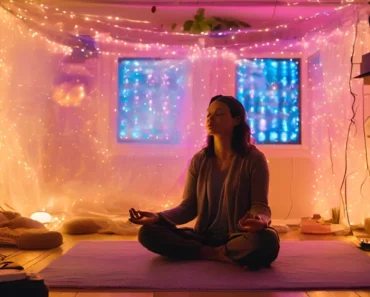Why Video Calls Exhaust Your Mental Energy. This guide explores the psychological and neurological reasons behind “Zoom fatigue,” detailing how constant virtual interactions drain mental resources and offering strategies to reclaim focus and well-being.
The Hidden Cost of Connectivity: Why Video Calls Exhaust Your Mental Energy
Video calls have become an indispensable tool in our hyperconnected world. They bridge geographical distances, facilitate remote work, and allow us to stay connected with loved ones. Yet, for many, a day filled with virtual meetings leaves them feeling inexplicably drained, irritable, and less productive than traditional in-person interactions. This phenomenon, often dubbed “Zoom fatigue,” highlights a crucial psychological truth: Video Calls Exhaust Your Mental Energy in ways that are not immediately obvious.
Unlike face-to-face conversations, video calls place unique demands on our brains. Our minds work harder to interpret non-verbal cues, manage self-presentation, and process constant visual stimuli. This increased cognitive load, sustained over multiple calls, contributes to significant mental exhaustion. The brain remains in a constant state of heightened awareness, struggling to adapt to an unnatural communication environment.
Recognizing the specific mechanisms behind why Video Calls Exhaust Your Mental Energy is the first step toward mitigating their impact. Understanding these hidden costs empowers individuals to implement strategies that protect their mental well-being, allowing them to leverage the benefits of virtual communication without suffering its draining effects. This awareness transforms a common complaint into actionable solutions.
The Core Reasons Why Video Calls Exhaust Your Mental Energy
Several unique characteristics of video calls place distinct psychological and neurological demands on us, leading to mental fatigue. These factors explain why Video Calls Exhaust Your Mental Energy more than traditional interactions.
Excessive Eye Contact and “Hyper-Gazing”
In real-life group conversations, people rarely maintain constant direct eye contact with everyone. Our eyes naturally shift. Video calls, however, often simulate constant, intense eye contact from multiple participants. When every face on the screen appears to be looking directly at you, it creates a sense of being constantly under scrutiny. This “hyper-gazing” is neurologically draining. It triggers a primal flight-or-fight response in the brain, leading to increased stress and fatigue. This unnatural level of visual intensity is a primary reason why Video Calls Exhaust Your Mental Energy.
Cognitive Overload: Decoding Non-Verbal Cues
While seemingly providing visual cues, video calls often distort or delay them. Subtleties like facial expressions, body language, and vocal tone can be pixelated, frozen, or out of sync. Our brains work harder to decode these fragmented or delayed signals. This increased cognitive load, the constant effort to interpret incomplete information, is mentally taxing. The brain strains to make sense of what is missing. This continuous decoding contributes significantly to why Video Calls Exhaust Your Mental Energy.
Constant Self-Monitoring: The “Mirror Effect”
Many video call platforms display a live feed of your own face, similar to a mirror. This constant self-monitoring is highly unusual in real-life conversations. We do not typically stare at ourselves while talking to others. This forces us to be acutely aware of our appearance, expressions, and posture. This creates a significant cognitive load related to self-presentation. This continuous self-assessment is mentally draining and contributes to the feeling that Video Calls Exhaust Your Mental Energy. It adds a layer of performance anxiety.
Reduced Mobility and Trapped Feeling
Video calls often require users to remain relatively static and confined to a small frame. This lack of physical movement and the inability to shift posture, stretch, or walk around freely during a call can feel unnatural and restrictive. Our bodies are designed for movement, which aids cognitive function and stress reduction. This physical confinement contributes to discomfort and mental fatigue, explaining why Video Calls Exhaust Your Mental Energy. The feeling of being “trapped” in one’s chair adds to the strain.
The Broader Impact: Consequences of Video Call Fatigue
Beyond individual exhaustion, the pervasive nature of video call fatigue can have wider repercussions for productivity, well-being, and social interaction. This highlights the systemic effect of why Video Calls Exhaust Your Mental Energy.
Decreased Productivity and Engagement
Mental exhaustion from excessive video calls directly impacts productivity. Individuals may struggle to focus on tasks after long virtual meetings. They become less engaged in subsequent calls or work. The quality of work may decline. This leads to reduced output and a general feeling of being overwhelmed by the workday.
Increased Irritability and Burnout
Chronic mental fatigue leads to increased irritability, mood swings, and a shorter temper. This affects personal relationships and overall well-being. If unchecked, this can contribute to broader professional burnout, making individuals feel cynical and disengaged from their jobs. This emotional toll is a significant consequence of why Video Calls Exhaust Your Mental Energy.
Reduced Creativity and Problem-Solving
Our brains need downtime and varied stimulation to foster creativity and effective problem-solving. Constant video calls overstimulate and drain these cognitive reserves. This leaves less mental capacity for innovative thinking, complex analysis, or generating new ideas. The continuous pressure to perform on camera limits spontaneous thought.
Strategies to Combat Video Call Exhaustion: Protecting Your Peace
Mitigating the draining effects of video calls requires conscious effort and intentional strategies. These practices help individuals reclaim their mental energy and maintain well-being.
1. Implement “No Camera” or “Audio Only” Breaks
Not every meeting requires video. Suggest or advocate for “audio only” periods or even entire “no camera” meetings. This reduces hyper-gazing and self-monitoring. It allows participants to move freely, look away from the screen, and focus purely on verbal communication. This simple change significantly reduces the cognitive load that explains why Video Calls Exhaust Your Mental Energy.
2. Schedule Breaks Between Calls
Avoid back-to-back video calls. Schedule at least a 10-15 minute break between virtual meetings. Use this time to step away from your screen, stretch, grab a drink, or engage in a quick offline activity. These micro-breaks allow your brain to decompress and reset, preventing cumulative fatigue.
3. Reduce Eye Contact: Look Away Periodically
During calls, resist the urge to maintain constant direct eye contact with the camera or every participant’s face. Periodically look away from the screen, focusing on something nearby or just above your monitor. This mimics natural eye movement in real-life conversations. It reduces the stress associated with hyper-gazing.
4. Minimize Self-View: Hide Your Own Image
Many video conferencing platforms allow you to hide your own video feed from your view. Utilize this feature. Eliminating the “mirror effect” reduces the cognitive drain of constant self-monitoring. You can focus more on the conversation and less on your appearance. This significantly lessens a key factor in why Video Calls Exhaust Your Mental Energy.
5. Stand Up and Move During Calls (When Appropriate)
If feasible, stand up or walk around during longer video calls, especially during periods where you are primarily listening. This increases physical mobility and reduces the trapped feeling. Movement can help stimulate blood flow and improve focus. Using a standing desk setup can facilitate this.
6. Communicate Needs and Set Boundaries
If you consistently feel drained, communicate your needs to your colleagues or team leaders. Suggest reducing meeting durations, encouraging “audio-only” options, or consolidating meetings. Advocate for a culture that recognizes and addresses video call fatigue. Setting clear boundaries around meeting frequency and duration helps manage the overall digital load.
7. Practice Digital Detoxes: Unplug Completely
Implement regular, intentional digital detox periods in your personal life. This means consciously stepping away from all screens during non-work hours. Engage in offline hobbies, spend time in nature, or connect with loved ones face-to-face. These complete breaks allow your mind to fully decompress and recover from the demands of the digital world. This is crucial for overall mental wellness.
Budgeting for Digital Well-being: Investing in Your Calm
Addressing the exhaustion caused by video calls does not require large financial outlays. Many effective strategies are free or low-cost, proving that investing in your mental well-being is accessible to everyone.
Free Strategies: Leveraging Awareness and Discipline
Many powerful strategies for combating why Video Calls Exhaust Your Mental Energy cost nothing. Practicing mindful device use, implementing “audio only” policies, consciously looking away from the camera, and scheduling short breaks are all free. These behavioral shifts are highly effective in reducing cognitive strain. They emphasize that your intentional effort is the most valuable investment in your well-being.
Affordable Tools: Enhancing Comfort
Consider affordable tools that enhance comfort and reduce strain. This might include an external monitor positioned at eye level, a comfortable ergonomic chair, or a standing desk converter (ranging from $50-$200). Blue light filtering glasses (under $50) can reduce eye strain. These small investments can significantly improve your physical comfort during long video calls.
Professional Support: A Worthwhile Investment
If chronic mental exhaustion from video calls significantly impacts your daily life, relationships, or overall mental wellness, professional support is a worthwhile investment. A therapist or counselor can provide tailored strategies, such as cognitive behavioral therapy (CBT), to address underlying anxiety or develop healthier coping mechanisms for digital demands. Costs vary. Many therapists offer sliding scale fees. Health insurance often covers a portion of therapy costs. Online therapy platforms can also be more affordable (typically $60-$150/session).
Read Also: Is Social Media Making Us Bad Listeners?
Caring for Your Mental Energy: Nurturing Your Digital Habits
Maintaining mental energy in a digitally intensive world requires ongoing self-awareness and consistent effort. Nurturing your digital habits is an investment in your overall well-being.
Regular Self-Assessment of Digital Load
Periodically assess your digital load. How many video calls do you have each day? How much time do you spend in front of screens? Do you feel drained or energized by your digital interactions? These self-check-ins help identify patterns contributing to fatigue. They allow you to adjust your habits proactively. This regular review helps maintain a healthy balance.
Prioritize Quality Sleep and Physical Activity
Adequate sleep and regular physical activity are foundational for mental energy. Ensure you get 7-9 hours of quality sleep nightly. Incorporate daily exercise, even short walks, to combat the physical stagnation of prolonged sitting. These habits directly improve your resilience to digital demands. They provide the necessary resources to combat why Video Calls Exhaust Your Mental Energy.
Cultivate Offline Hobbies and Connections
Actively pursue hobbies and social connections that do not involve screens. Engage in reading physical books, gardening, cooking, or meeting friends face-to-face. These offline activities provide essential mental breaks. They offer a different kind of fulfillment. They recharge your cognitive and emotional batteries, providing a crucial counterbalance to digital intensity.
Latest Innovations in Virtual Communication Tools
The technology supporting virtual communication continually evolves, offering new features designed to enhance user experience and address common issues like fatigue. These innovations aim to make video calls less draining.
Improved AI for Background and Filters
AI-powered background features and filters become more sophisticated. These can improve privacy by blurring surroundings or allow users to present a more polished image without extensive effort. They aim to reduce self-consciousness and visual clutter, subtly easing the cognitive load on participants. This can help address why Video Calls Exhaust Your Mental Energy.
Virtual Reality (VR) and Immersive Environments
Emerging VR platforms offer new ways for virtual meetings. While requiring specialized hardware, they create more immersive environments where participants are represented by expressive avatars. This might reduce hyper-gazing by allowing more natural movement and eye-gaze within the virtual space. It could offer a different kind of presence that is less fatiguing than traditional 2D video.
Focus Modes and Digital Well-being Integrations
Communication platforms increasingly integrate focus modes and digital well-being features. These allow users to temporarily pause notifications during meetings, minimize distractions, or receive reminders to take breaks. These tools help individuals manage their digital environment more effectively, promoting more focused and less draining virtual interactions.
Making Your Final Decision: Mastering Your Digital Energy
Understanding why Video Calls Exhaust Your Mental Energy is the first step toward managing this modern challenge effectively. Focus on implementing strategies that prioritize your well-being and cultivate a healthier relationship with virtual communication.
Prioritize implementing “audio only” options and frequent breaks between calls. Minimize self-view. These practical steps directly reduce the unique cognitive demands of video conferencing.
Consider your work culture. Advocate for mindful meeting practices within your team or organization. Lead by example in adopting healthier digital habits. Collective change enhances everyone’s well-being.
Do not overlook the importance of holistic self-care. Adequate sleep, physical activity, and engaging in offline hobbies are crucial for recharging your mental reserves.
Remember, video calls are a powerful tool, but they demand mindful management. When you protect your mental energy, you enhance both your productivity and your overall quality of life.
Reclaiming Your Focus: Thriving in the Virtual World
The phenomenon of why Video Calls Exhaust Your Mental Energy highlights a critical aspect of modern digital life. By understanding its underlying causes and applying proactive strategies, you can mitigate its draining effects and protect your mental well-being.
Take time to implement tech-free breaks and optimize your virtual meeting environment. Remember that prioritizing your cognitive health is essential for sustained productivity and overall happiness.
As you navigate the demands of virtual communication, remain vigilant about your energy levels. Your commitment to mindful digital habits will lead to greater clarity and resilience.
By embracing these insights, you transform your relationship with video calls. You ensure they serve as effective tools for connection and collaboration, without compromising your valuable mental energy.
Frequently Asked Questions About Why Video Calls Exhaust Your Mental Energy
Why do Video Calls Exhaust Your Mental Energy more than in-person meetings?
Video calls are more exhausting due to excessive eye contact (“hyper-gazing”), increased cognitive load from decoding fragmented non-verbal cues, constant self-monitoring (the “mirror effect”), and reduced physical mobility. These factors create higher mental strain.
What is “hyper-gazing” in video calls?
“Hyper-gazing” refers to the unnatural amount of constant, direct eye contact experienced in video calls, where every participant appears to be looking directly at you. This triggers a primal stress response, contributing to why Video Calls Exhaust Your Mental Energy.
How can I reduce exhaustion during long video calls?
To reduce exhaustion, try implementing “no camera” or “audio only” breaks, scheduling short breaks between calls, periodically looking away from the screen, minimizing your self-view, and standing up or moving around if appropriate.
Are there any tools to help with video call fatigue?
Yes, some tools can help. Using external monitors positioned at eye level, ergonomic furniture, and blue light filtering glasses can reduce physical strain. Software features like hiding self-view and notification management also reduce cognitive load.
Does physical activity help combat video call exhaustion?
Yes, physical activity is very beneficial. Engaging in exercise, stretching, or simply moving around during breaks or even during parts of a call (if appropriate) can help combat the physical stagnation associated with video calls. This improves blood flow and reduces mental fatigue.





